
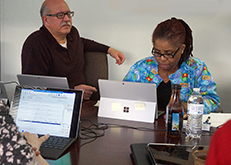
What Is an EHR?
An Electronic Health Record (EHR) is an electronic version of a patient’s medical history, that is maintained by the provider over time, and may include all of the key administrative clinical data relevant to that person’s care under a particular provider, including demographics, progress notes, problems, medications, vital signs, past medical history, immunizations, laboratory data and radiology reports.
The EHR automates access to information and has the potential to streamline the clinician’s workflow. The EHR also has the ability to support other care-related activities directly or indirectly through various interfaces, including evidence-based decision support, quality management, and outcomes reporting.
EHRs are the next step in the continued progress of healthcare that can strengthen the relationship between patients and clinicians. The data, and the timeliness and availability of it, will enable providers to make better decisions and provide better care.
From CMS.gov, a Federal government website managed and paid for by the U.S. Centers for Medicare & Medicaid Services
Resident, Client & Tenant Picnic
June 15, 2017, 11 am-2 pm
Hills & Dales Park
Finding the Path
How do you find people living on the street or in places “not fit for human habitation” (that’s actual HUD terminology) and get them into safe housing? By building relationships with them.
MVHO has two groups that connect with people outside of shelters to find the pathway to safe housing. One is called CABHI, the Cooperative Agreement to Benefit Homeless Individuals. Another is PATH, which stands for Projects for Assistance in Transition from Homelessness.
PATH has grown from two to nine people who can do intake on the street without the lengthy questions by a shelter. PATH employs a consulting psychologist to do the kind of field analysis that helps people with severe persistent mental illness get safe housing with less red tape.
Electronic Health Records Launched in April
Technology automates recordkeeping, frees up more time to serve PLACES residents, tenants and clients.
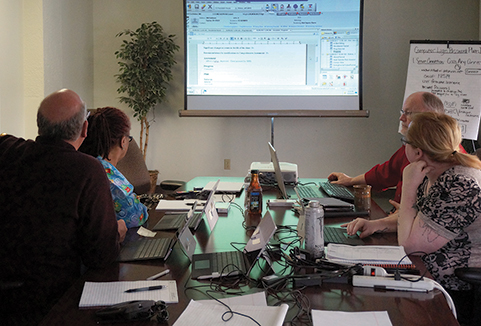
Learning to use new computers is part of the hands-on training on electronic
health records.
This spring, PLACES is taking a leap forward to embrace new technology that will automate healthcare recordkeeping and give staff more time to spend with the people they serve.
More than 70 staff members were intensively trained in NextGen, an electronic health record (EHR) system used by leading hospitals in the area. Two training sessions were held at PLACES headquarters each day and evening, six days a week between March 20 and April 14, to capture people who work on all shifts.
Case managers are being equipped to provide more training and coaching to staff at their facilities. Additional training also will be incorporated into clinical education for licensure and certification, as well as new hire onboarding.
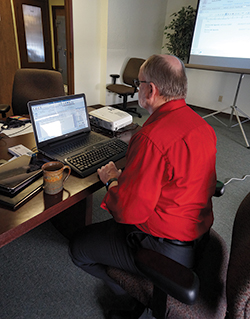 “The EHR will provide more consistency in the delivery of care. It captures more information than we could using pen and paper.”
“The EHR will provide more consistency in the delivery of care. It captures more information than we could using pen and paper.” – Jeff Stokoe, Residential Services Coordinator
New Funding Environment
While not yet a government mandate for behavioral health facilities, proactive adoption of the EHR will make PLACES a more sustainable organization in the new funding environment. “This aligns with our desire to be a certified Medicaid provider, which gives us a new revenue stream,” said executive director Roy Craig.
“Using an EHR frees up more time for the people we serve, since we spend less time taking notes,” he explained. “We’re seizing the opportunity to do it now because the cost has been subsidized by ADAMHS.”
Benefits for Staff
According to director of client services Janet Johnston, the EHR makes it easier to find chart information. “Our staff is excited about being able to see more of the care plan for each resident,” she said. “Our case managers do their notes right in the field. This allows them to immediately see anything important, such as alerts, allergies and contact information.”
PLACES Fills Unique Role in Web of Behavioral Health Services – Part 2
Since 1988 PLACES has worked in partnership with other behavioral health agencies in Montgomery County to deliver services to the mentally ill, homeless and recovering substance abusers.
In the Winter 2017 issue of Going Places, we heard from two of PLACES’ key partners who help serve the most vulnerable among us with dignity, respect and compassion: ADAMHS (Alcohol, Drug Addiction and Mental Health Services) and the Homeless Solutions Policy Board. In this issue we hear from a third long-standing partner of PLACES.
Miami Valley Housing Opportunities
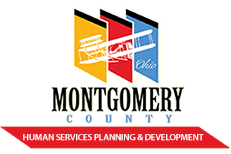
Miami Valley Housing Opportunities (MVHO) owns and manages more than 450 rent-subsidized, service-supported housing units throughout Montgomery County. They also manage federal rent subsidies that help more than 450 formerly homeless people remain stably housed in apartments owned by private landlords.
MVHO celebrated its 25th anniversary last year, and one of their very first buildings was Tangy Court, which PLACES now operates as part of the Housing First program. In fact, PLACES is MVHO’s longest term partner.
“PLACES has played a key role in helping to serve many of the hardest-to-serve individuals,” said Debbie Watts Robinson of MVHO. “PLACES is a very valuable resource for our community.”
“We were fortunate that we had community leaders who felt the need to address the homeless issue,” she said. “Housing is essential to helping vulnerable people improve their quality of life. Housing is also a cost-effective way to help people achieve stability in their lives.”
Permanent Supportive Housing (PSH) is considered a best practice because it is not time-limited. People can live in PSH as long as they are eligible and have need of the services offered. “Our community has worked diligently to provide various options of PSH to give the people we serve the best opportunity for success,” Robinson said.
Providing a continuum of care with good outcomes takes a lot of resources and coordination. To make the best use of tax dollars, groups like MVHO and HSPB work closely to forecast what HUD is going to do and to position Dayton as a worthy recipient of future funding.
“With good outcomes, we’re eligible for bonus projects; that is, more money to provide additional services,” Robinson said.
Residents, Clients & Tenants Recognized at March Event
Every year, PLACES honors its residents, clients and tenants for achievements that support their recovery. These accomplishments include becoming employed, furthering education and offering service to our community, as well as steps toward recovery that may be harder to define.
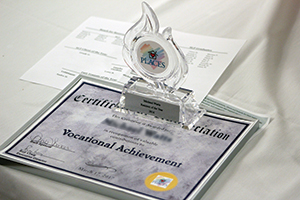
Participants all of PLACES’ programs were celebrated on March 17 at a St. Patrick’s Day-themed event at Kohler Banquet Hall in Kettering.
This year, nine residents of adult care facilities, nine tenants in Housing First facilities and 17 clients from the Supportive Living Program won Vocational Achievement Awards. This award is presented to individuals who have worked in paid employment or participated in a vocational training program during the past year. It recognizes that employment is an important part of recovery and vital to self-esteem.
Twenty residents of adult care facilities, seven tenants in Housing First and 17 Supportive Living clients earned the Reach for Recovery Award for taking positive steps in their own recovery. Such steps might be learning to understand and minimize the negative effects of brain disorders, reducing drug use or abstaining from alcohol consumption.
Three clients received the Educational Achievement Award for taking high school, college or technical courses or working towards their GED. Nine residents and clients received a Community Service Award for volunteering in peer support programs, animal shelters, church group or other activities. Demonstrating a concern for others and one’s community is an important aspect of recovery.
PLACES is especially proud that 24 Supportive Living clients graduated from the program. This means they have reached their goals and no longer need the program’s services. Supportive Living helps clients learn to live independently in community housing.
In addition, there was a resident, tenant and client of the year chosen for each group home, residence and program. “These nine people showed tremendous progress in reaching the goals they set for themselves, and thus have made the greatest strides towards their recovery,” said executive director Roy Craig.
“One tenant spoke to the group about how he had been sleeping outside, worried about being bitten by rats, and now he’s gainfully employed. Another of our SLP clients just graduated from college,” Craig added. “Hearing that energizes our staff and inspires other tenants and clients.”
Trotwood Resident of the Year Re-engages With Life
-(1).jpg) Recognition earned for taking positive steps.
Recognition earned for taking positive steps.When David Boomershine* entered the Trotwood adult care facility diagnosed with a rare form of schizophrenia (Hebephrenia Unspecified), he was a recluse, unable to manage his medications and appointments or take care of basic activities of daily living. Eighteen months later, David is proud to have been chosen by PLACES staff as Trotwood’s Resident of the Year for 2017.
Shelica Arnold, residential manager at the Trotwood facility, explained that David had lacked socialization skills, initiative or any motivation to be involved with his housemates. “There was a lack of emotion, no excitement, no desire to engage with us,” she said. But with consistent support and proper medication, David has made great strides in a short time. “He has improved in all areas and is engaging with staff and residents now without hesitation.
“We work on helping him accept the fact that he has this mental health disorder,” Arnold said. “If he understands, he can better deal with the symptoms. We’ve been modeling some of his actions and explaining how he’s changed. We try to explain it in layman’s terms, so that he understands.”
Once unwilling to follow prompts, David today is very cooperative and learning to become more independent. He loves reading the Bible from cover to cover and enjoys smoke breaks and conversing with other residents. “He’s starting to smile or laugh,” Arnold said. “He didn’t do that when he arrived here. It makes me very proud to see him transform in the way that he has. It gives us hope that there is a chance for people to change. He fought it at first, but now will volunteer for almost anything. The change has been really amazing.”


